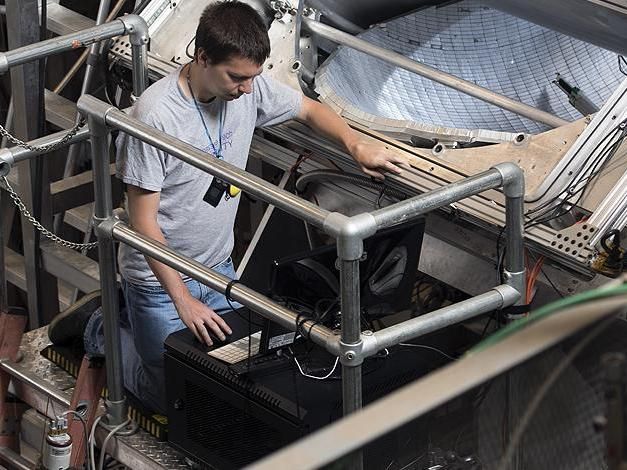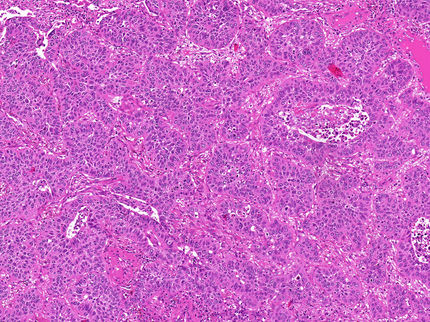Fluidity Predicts Aggressiveness of Cancerous Tumours
Doctors have been palpating suspicious hardened areas under their patients’ skin throughout recorded history. Scientists at Charité university clinic in Berlin and Leipzig University, in cooperation with clinical diagnostic radiologists and biophysicists, have now proven that this ancient examination technique is a diagnostic method that continues to show promise for the future. They discovered that a tumour’s consistency can have a decisive influence on how a cancer progresses, and they recently published their findings in the renowned journal “Advanced Science”.
The first step was for the Charité Experimental Radiology team under the direction of Prof. Ingolf Sack to develop a novel imaging technique, called tomoelastography. This allows scientists to map out the mechanical properties of tumours and surrounding tissue using an MRI. After the radiologists had gathered a great deal of patient data on the changing stiffness and fluidity of cancerous tumours, Prof. Josef Käs’ team of biophysicists at Leipzig University took a closer look at the tumours’ micromechanics. Käs and his colleagues then compared the data from Charité with the fluid properties of individual cells and tumour sample explants, received from their collaborators from the University of Leipzig Medical Center. “We found surprisingly consistent patterns between the changes in the tumours’ mechanical material properties and their increasing aggressiveness,” Käs said.
Frank Sauer, the study’s lead author and a member of Käs’ team, explained that these mechanical patterns are more complicated than simply differentiating between stiff and soft tissue. While palpation findings tend to name one of these two possibilities, tomoelastography allows for an additional graduated measurement of the change from solid to fluid behaviour with precision down to the pixel level. “If cells in the tissue trade places, like in running water, then that leads to the entire tumour having a higher degree of fluidity,” stated Sauer.
In the past, Käs and his team were able to show that precisely these kinds of “cell rivers” exist in cancerous growths even if the tumour as a whole can be felt as a stiff lump. Sack’s team at Charité were now able to measure these fundamental links for the first time in patients and use the information for diagnostics. Sauer explained that the assessment of fluidity, hardness and texture of a lump using tomoelastography could enable more precise cancer diagnoses and thereby help patients receive tailored treatment options. The study is now to be evaluated in additional clinical pilot studies so that it can be used in radiological diagnostics.
Original publication
Original publication
Organizations
Other news from the department science

Get the analytics and lab tech industry in your inbox
By submitting this form you agree that LUMITOS AG will send you the newsletter(s) selected above by email. Your data will not be passed on to third parties. Your data will be stored and processed in accordance with our data protection regulations. LUMITOS may contact you by email for the purpose of advertising or market and opinion surveys. You can revoke your consent at any time without giving reasons to LUMITOS AG, Ernst-Augustin-Str. 2, 12489 Berlin, Germany or by e-mail at revoke@lumitos.com with effect for the future. In addition, each email contains a link to unsubscribe from the corresponding newsletter.
Most read news
More news from our other portals
See the theme worlds for related content
Topic world Diagnostics
Diagnostics is at the heart of modern medicine and forms a crucial interface between research and patient care in the biotech and pharmaceutical industries. It not only enables early detection and monitoring of disease, but also plays a central role in individualized medicine by enabling targeted therapies based on an individual's genetic and molecular signature.

Topic world Diagnostics
Diagnostics is at the heart of modern medicine and forms a crucial interface between research and patient care in the biotech and pharmaceutical industries. It not only enables early detection and monitoring of disease, but also plays a central role in individualized medicine by enabling targeted therapies based on an individual's genetic and molecular signature.
Last viewed contents
NanoSight is recognised as an ISO9001 Certified Company
Genomic Standards for the Future: Setting the Guidelines - Using the new MIGS standard genomic and environmental data fields can be attributed to the different organisms
New syphilis test provides quicker and easier diagnosis
Establishing standard definitions for genome sequences


























































